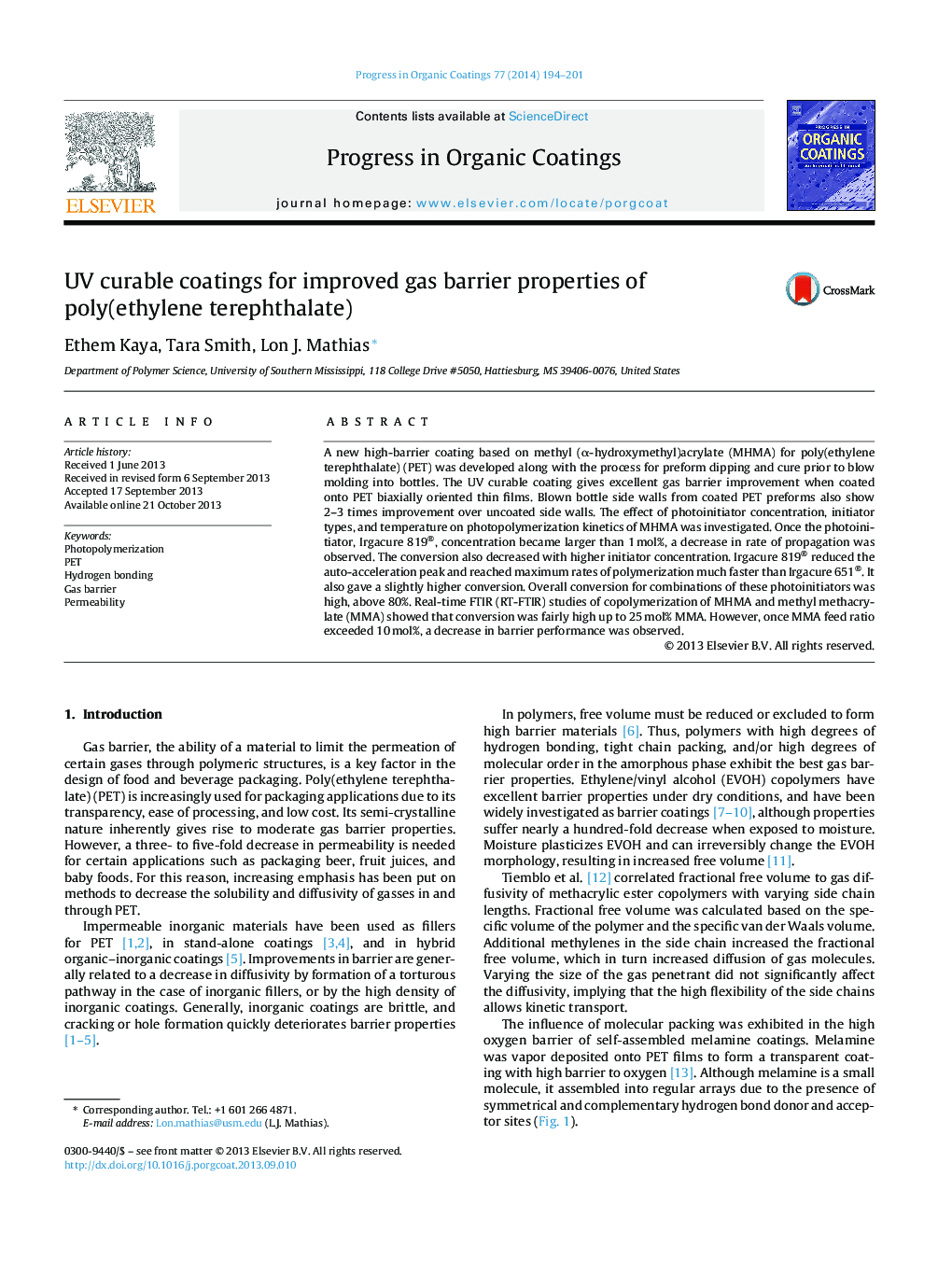| Article ID | Journal | Published Year | Pages | File Type |
|---|---|---|---|---|
| 692888 | Progress in Organic Coatings | 2014 | 8 Pages |
•A new high-barrier UV curable coating was developed for PET.•Barrier improvements of nearly four times that of uncoated PET were obtained for both oxygen and carbon dioxide.•Photopolymerization kinetics of methyl (α-hydroxymethyl)acrylate (MHMA) was investigated.•Copolymerization kinetics of MHMA and methyl methacrylate (MMA) was investigated.•Conversion of MHMA and MMA was fairly high up to 25 mol% MMA.
A new high-barrier coating based on methyl (α-hydroxymethyl)acrylate (MHMA) for poly(ethylene terephthalate) (PET) was developed along with the process for preform dipping and cure prior to blow molding into bottles. The UV curable coating gives excellent gas barrier improvement when coated onto PET biaxially oriented thin films. Blown bottle side walls from coated PET preforms also show 2–3 times improvement over uncoated side walls. The effect of photoinitiator concentration, initiator types, and temperature on photopolymerization kinetics of MHMA was investigated. Once the photoinitiator, Irgacure 819®, concentration became larger than 1 mol%, a decrease in rate of propagation was observed. The conversion also decreased with higher initiator concentration. Irgacure 819® reduced the auto-acceleration peak and reached maximum rates of polymerization much faster than Irgacure 651®. It also gave a slightly higher conversion. Overall conversion for combinations of these photoinitiators was high, above 80%. Real-time FTIR (RT-FTIR) studies of copolymerization of MHMA and methyl methacrylate (MMA) showed that conversion was fairly high up to 25 mol% MMA. However, once MMA feed ratio exceeded 10 mol%, a decrease in barrier performance was observed.
